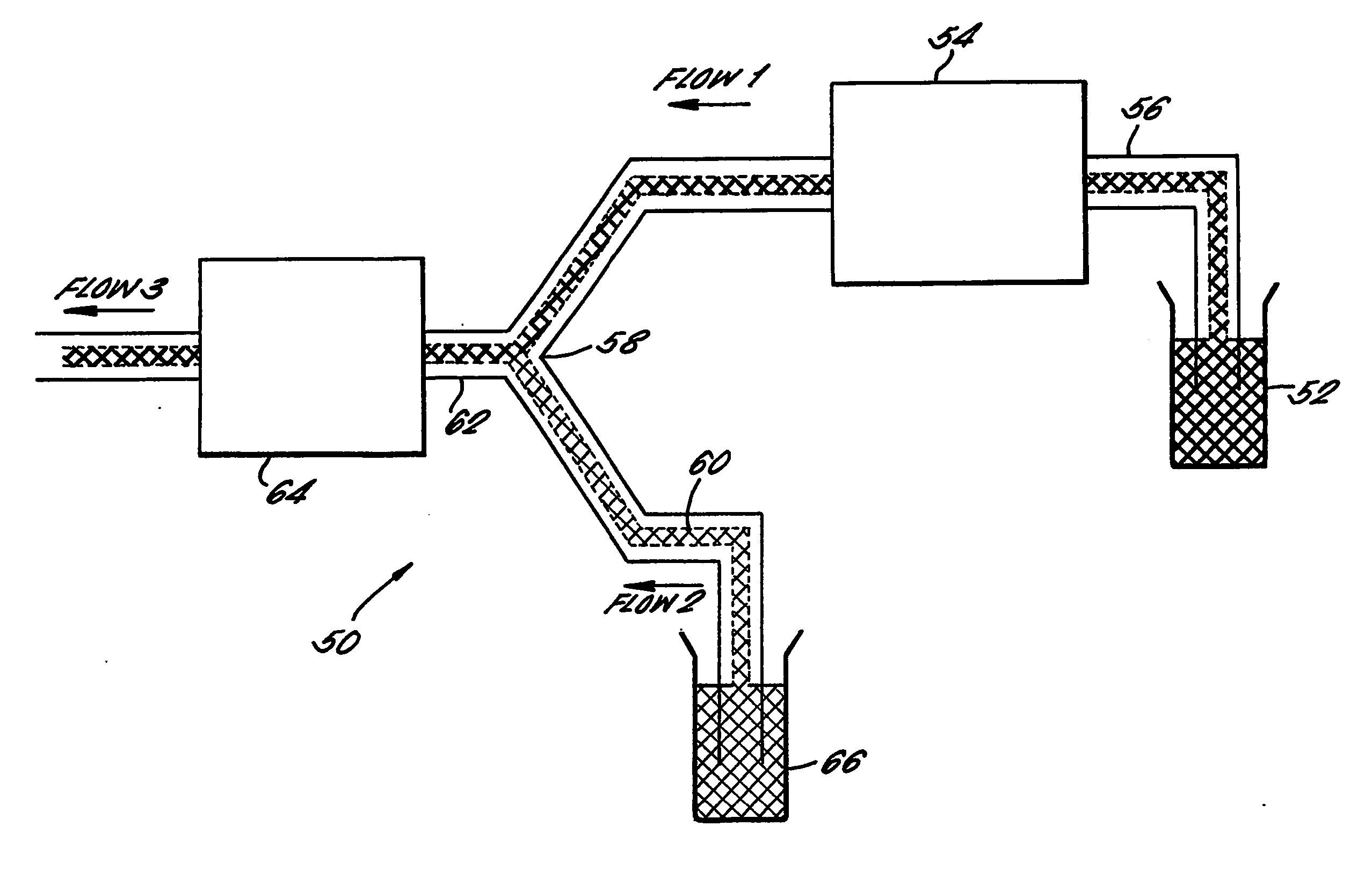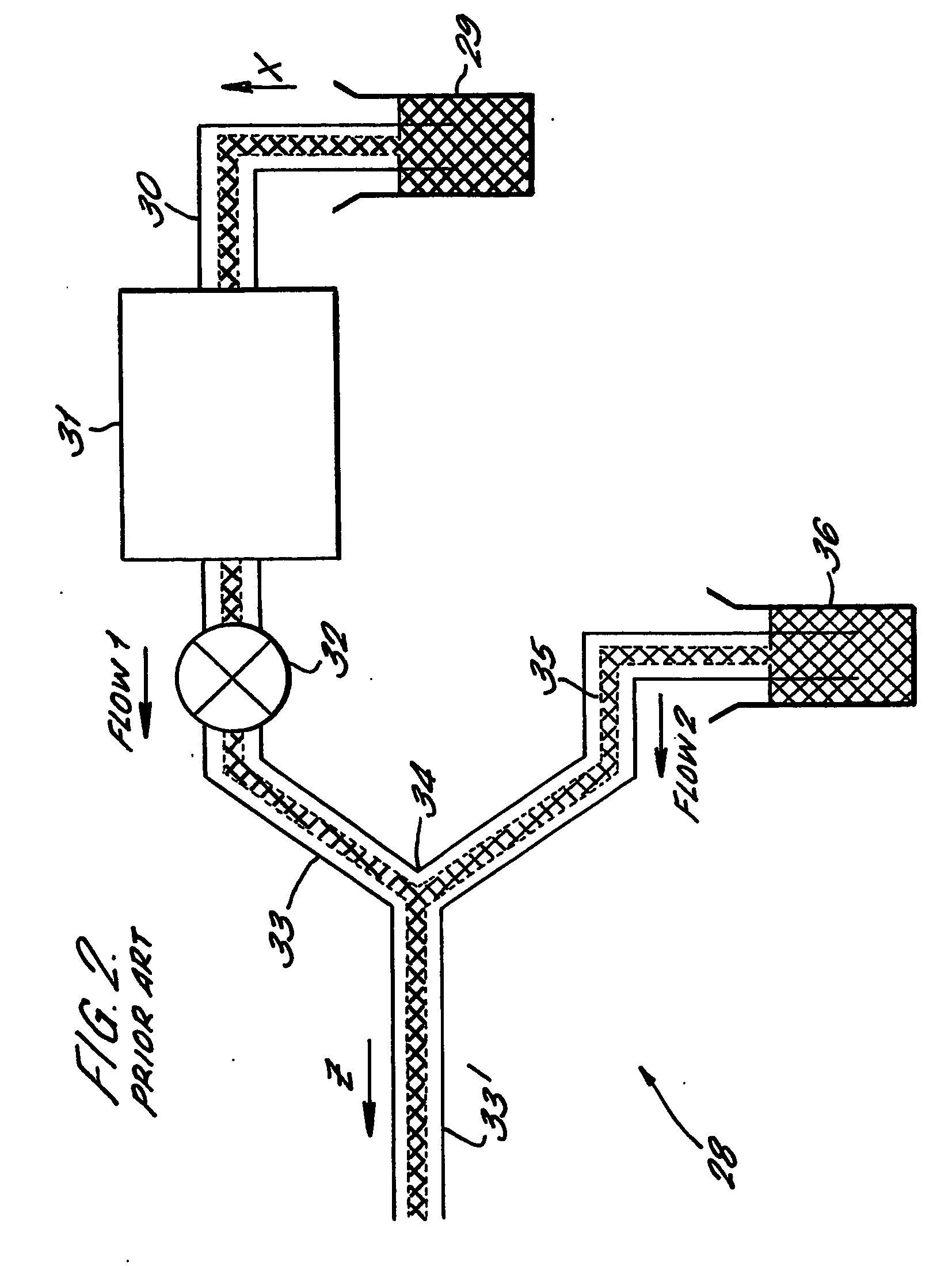Device and method for diluting a sample
a sample and device technology, applied in the field of devices and methods for dilution samples, can solve the problems of reducing the reliability of test results and subsequent test results, reducing sample throughput, and limited measurement capability of analytical equipment for analyzing trace elements in liquids. the effect of reducing system complexity
- Summary
- Abstract
- Description
- Claims
- Application Information
AI Technical Summary
Benefits of technology
Problems solved by technology
Method used
Image
Examples
Embodiment Construction
[0033] Referring to FIG. 3, a pump system 50 embodying the present invention is shown in schematic form. A sample 52 to be analysed is drawn from a container by a first pump 54 along a first pipe 56 to a mixing section 58. The end of the first pipe at which the sample enters the system is completely submersed in the sample to ensure no air enters the system. At the mixing section, the first pipe 56 is joined to a second pipe 60 to form a single pipe 62.
[0034] The mixer is a “Y” or “T” configured junction in the tubing or pipes. Other, more complex arrangements of pipe joints might be used which ensure thorough mixing of the fluids entering the mixing region from the first and second pipes. The exit of the mixing section comprises a single pipe 62 disposed between the mixing section and a second pump 64 which pumps fluid from the mixing section to an instrument (not shown) for analysis.
[0035] Mixing of the sample and diluent to form a diluted sample takes place at the interface of ...
PUM
 Login to View More
Login to View More Abstract
Description
Claims
Application Information
 Login to View More
Login to View More - R&D
- Intellectual Property
- Life Sciences
- Materials
- Tech Scout
- Unparalleled Data Quality
- Higher Quality Content
- 60% Fewer Hallucinations
Browse by: Latest US Patents, China's latest patents, Technical Efficacy Thesaurus, Application Domain, Technology Topic, Popular Technical Reports.
© 2025 PatSnap. All rights reserved.Legal|Privacy policy|Modern Slavery Act Transparency Statement|Sitemap|About US| Contact US: help@patsnap.com



